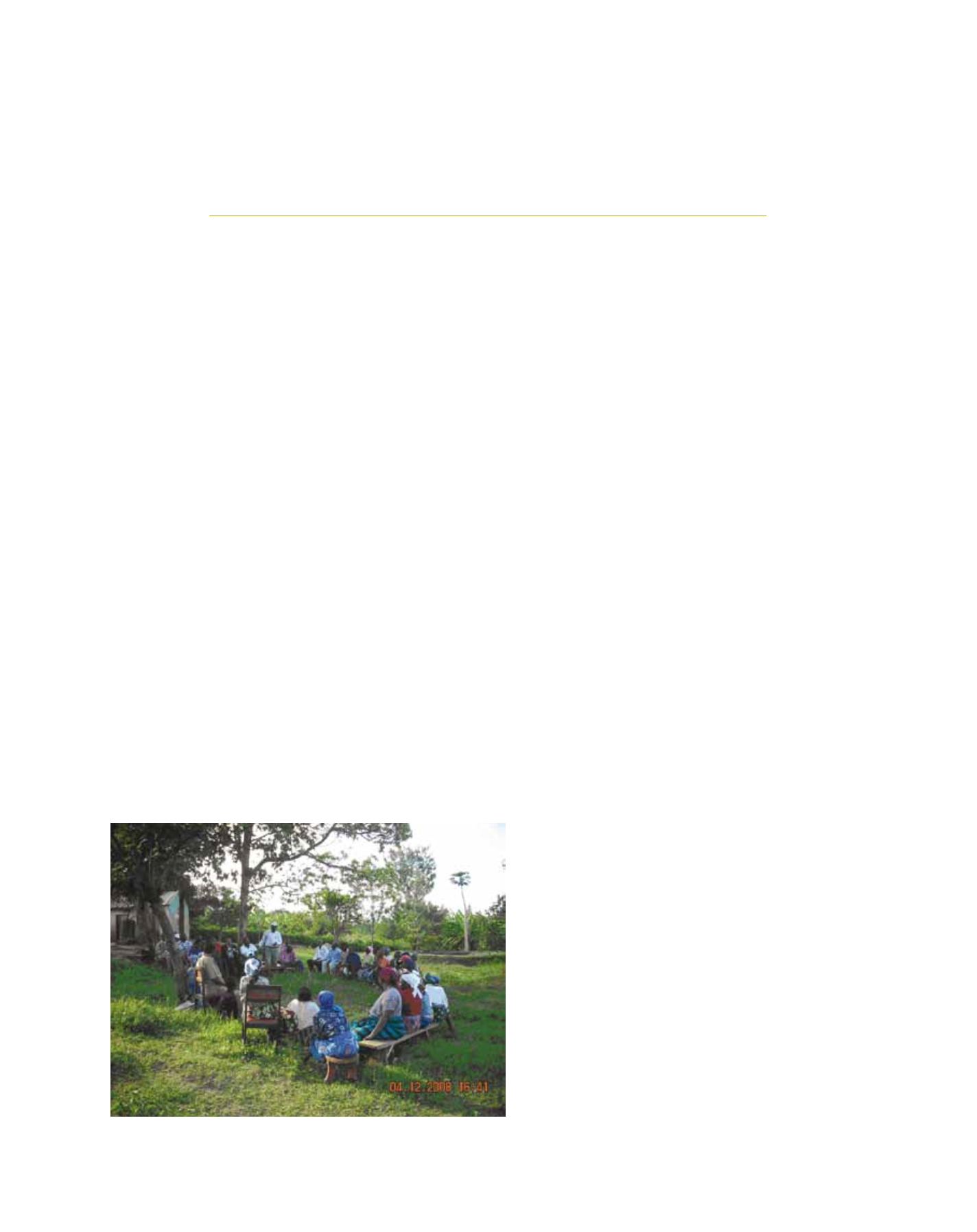

[
] 24
Mainstreaming climate information
for agricultural activities in Kenya
Peter Ambenje, Samwel Marigi, Samuel Mwangi, Ayub Shaka and William Githungo,
Kenya Meteorological Department
T
he fourth Assessment Report of the Intergovernmental Panel
on Climate Change has explicitly demonstrated that climate
change is indisputable. In many parts of the world, the
impacts associated with climate change are being observed with
increased frequency and severity. This is so even in Kenya, where
climate-sensitive activities in many socioeconomic sectors such as
agriculture and food security, water resources, energy, health, trans-
port and infrastructure are being affected by changes in the climate
patterns. This is imposing a strain on the vulnerable communi-
ties’ livelihoods, especially agricultural and livestock production.
Fluctuations in the seasonal rainfall patterns lead to instability in
agricultural production and economic hardships. The importance
of adaptation to create resilience of the vulnerable communities to
climate variability and climate change is, therefore, gaining ground.
Effective adaptation to climate variability and climate change is
highly dependent on access to climate information for the coming
seasons and years to support decisions and choices.
Kenya suffers from food insecurity, mainly due to intra-seasonal
and inter-annual variability in rainfall. The relatively high vulner-
ability of the country to climate-induced crises is due to its high
reliance on rainfed agriculture and predominance of agro-ecologies
(arid and semi-arid) that are marginal for crop production. Climate
variability directly or indirectly influences at least 75 per cent of any
agricultural output in the country. In the arid and semi-arid areas,
which constitute nearly 80 per cent of the land area,
rainfall during a crop season can vary from about a third
to two-and-a-half times the normal amounts, making
agriculture a risky enterprise.
Effective measures to manage the impacts of climate
variability have the potential to serve as crucial steps
in helping farmers cope better with the variability in
climate. In a situation where important farming deci-
sions, whose outcome is highly sensitive to the amount
and distribution of rainfall during the season, are to
be made well before knowing the seasonal conditions,
advance information about the rainfall during the
coming season can help farmers make more tactical
decisions about investments and adopt management
practices that make best use of the season. Seasonal
climate forecasts in the range of two to three months in
advance, which also include crucial information such as
the potential onset and cessation times of rainfall, are
vital for farm-level decision-making.
However, weather forecast information is still not as
widely used as it should be by end users (farmers) due to:
•
Limited clarity on what forecast formats are best
suited to user needs, though it is known that the
optimal format may vary between applications
•
Complexities in the use of information, which may
lead to further difficulties if inappropriately used
•
Fragmented production and delivery systems which
sometimes make it difficult for forecasts to reach the
end users who may have a particular need for them
•
End users’ perceived need for temporal and spatial
detail (such as exact rainfall amounts, onset and
cessation dates) in the prediction that currently
cannot be achieved
•
Lack of awareness of the significance of factoring
weather/climate information into planning.
Currently, weather forecast information does not guide
location-specific decision-making by users. This is,
however, information that can be sourced from the
national meteorological and hydrological services
on request. Additionally, the current major means of
disseminating forecast information (print media and
internet) do not adequately convey the messages to end
users. In some other instances, users get the message
when it is too late to apply it in decision-making.
A
griculture
Image: KMD
Farmers consult with experts from technical institutions to plan ahead
















